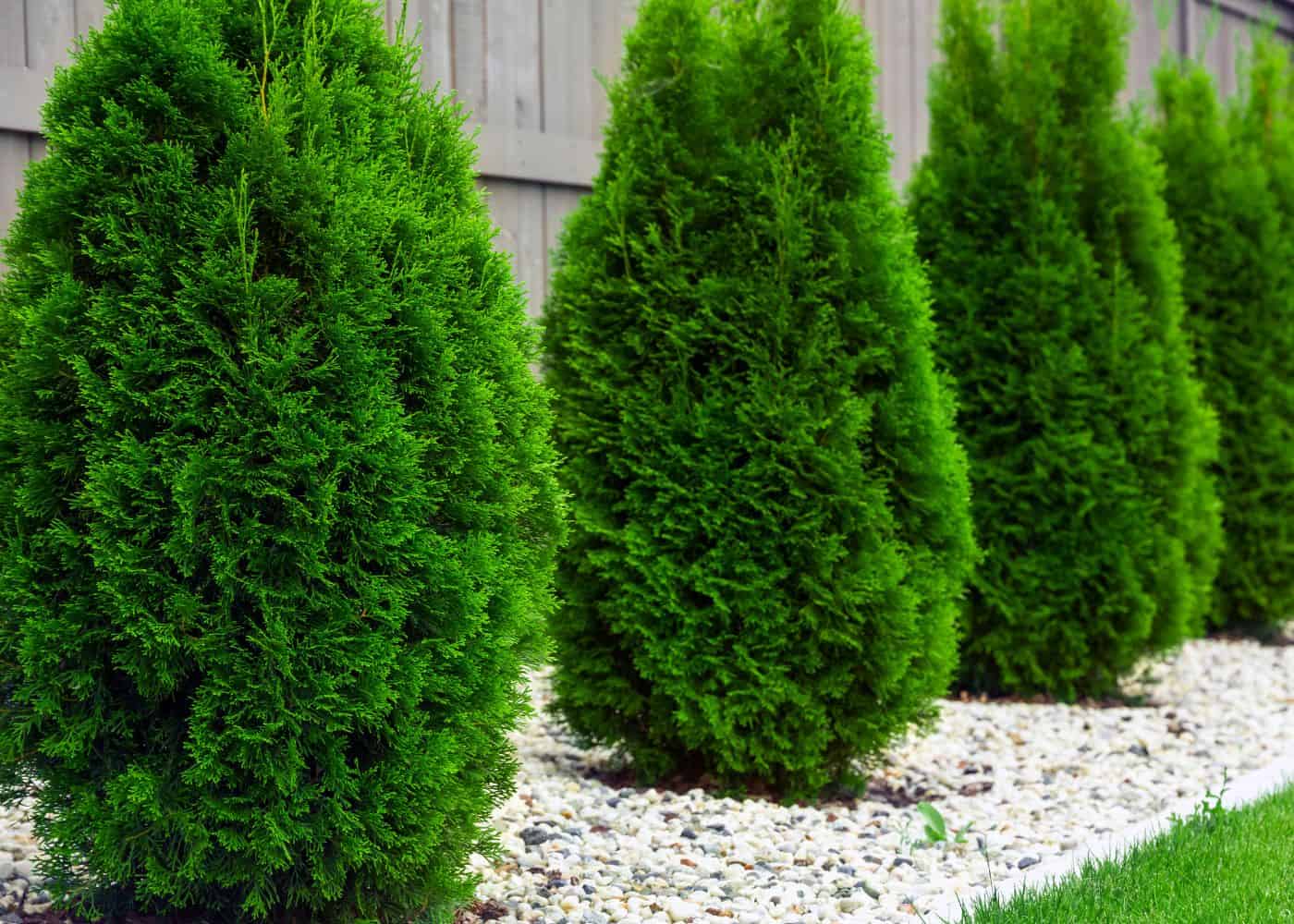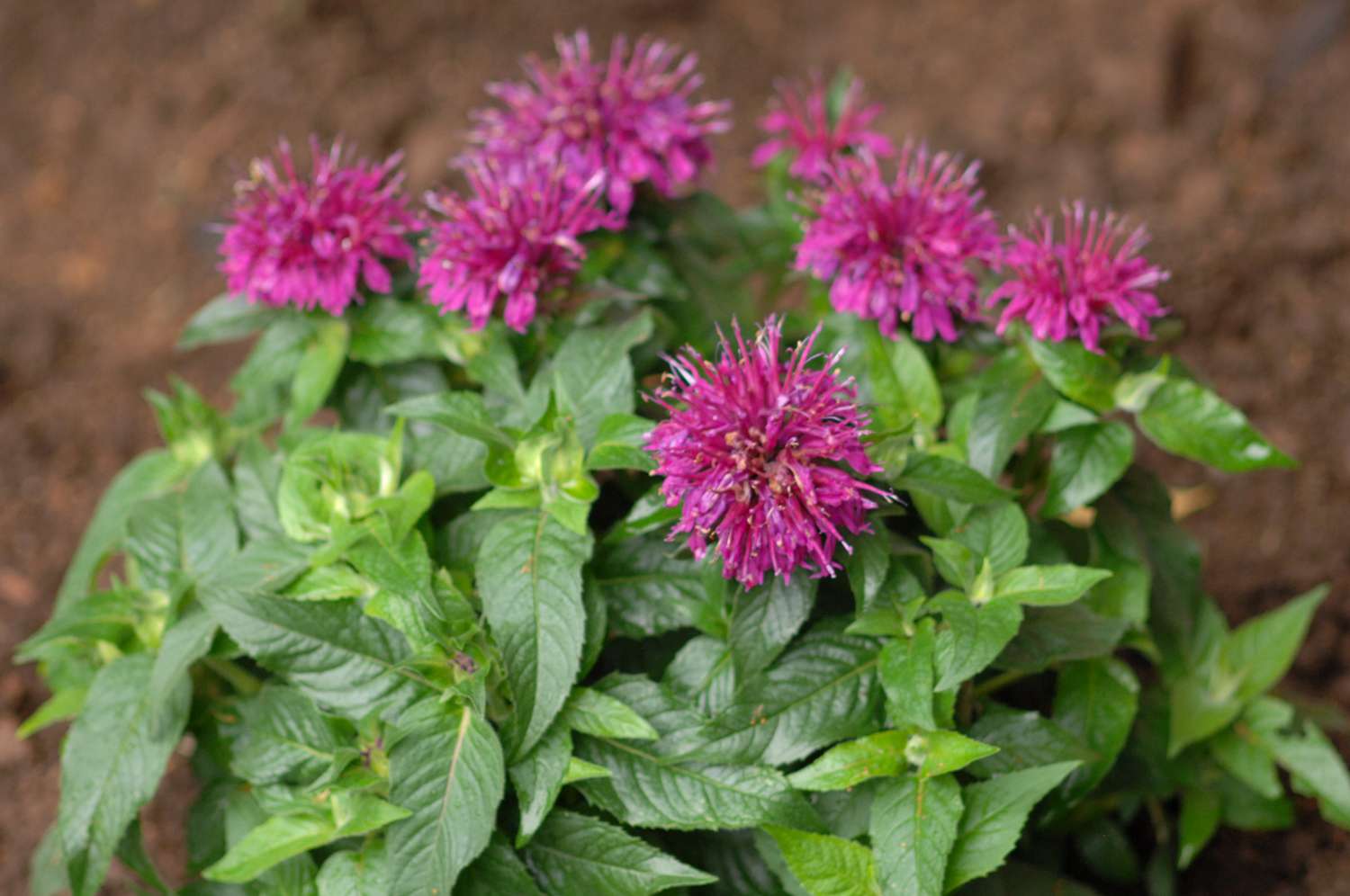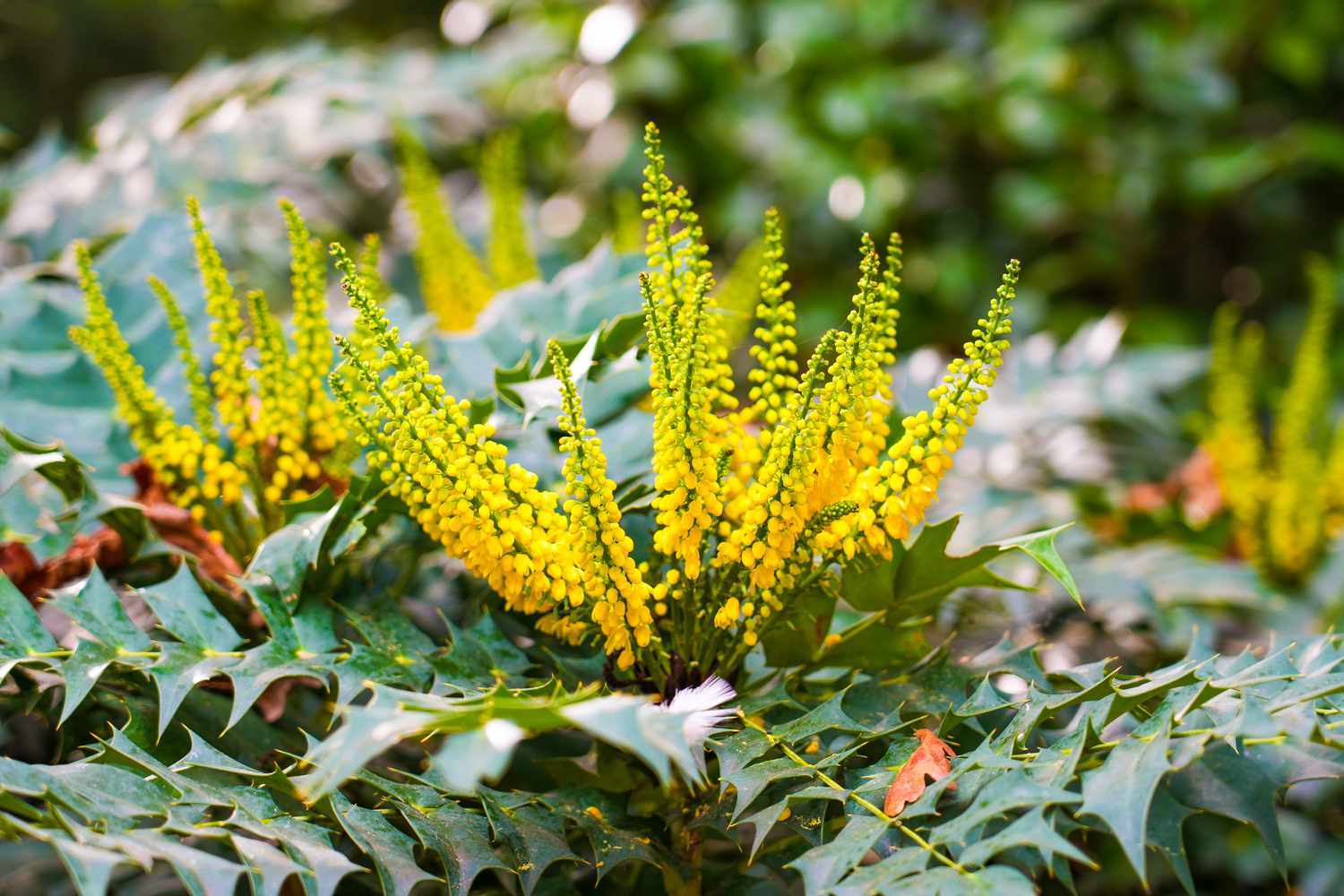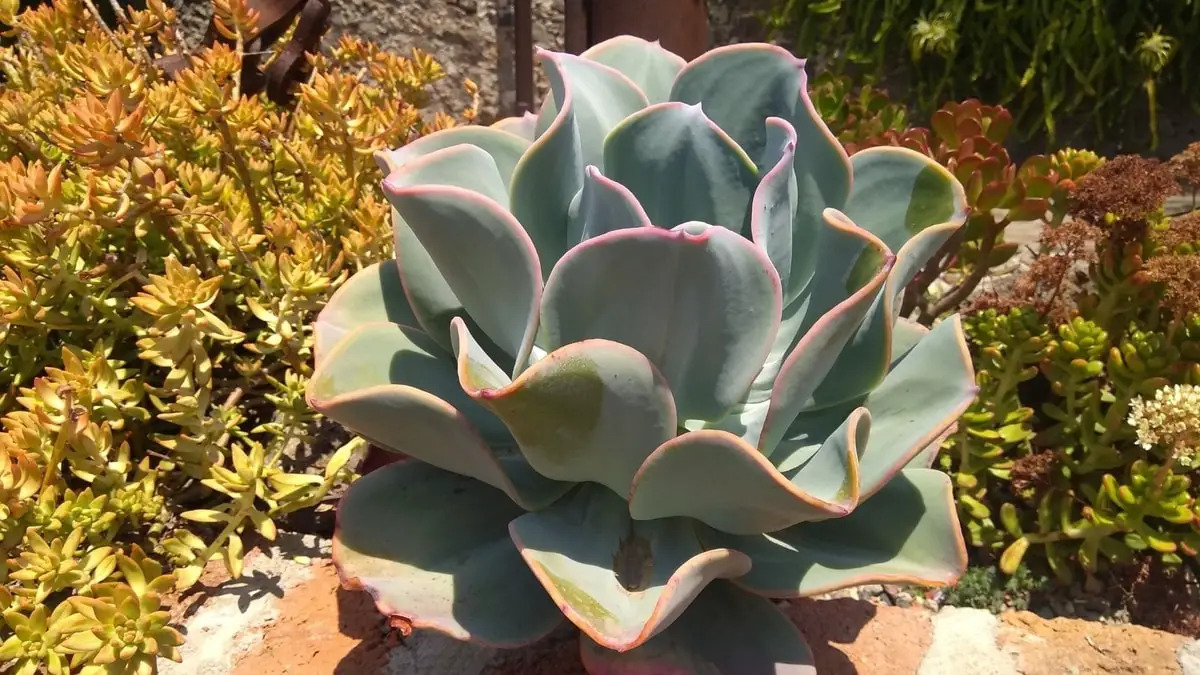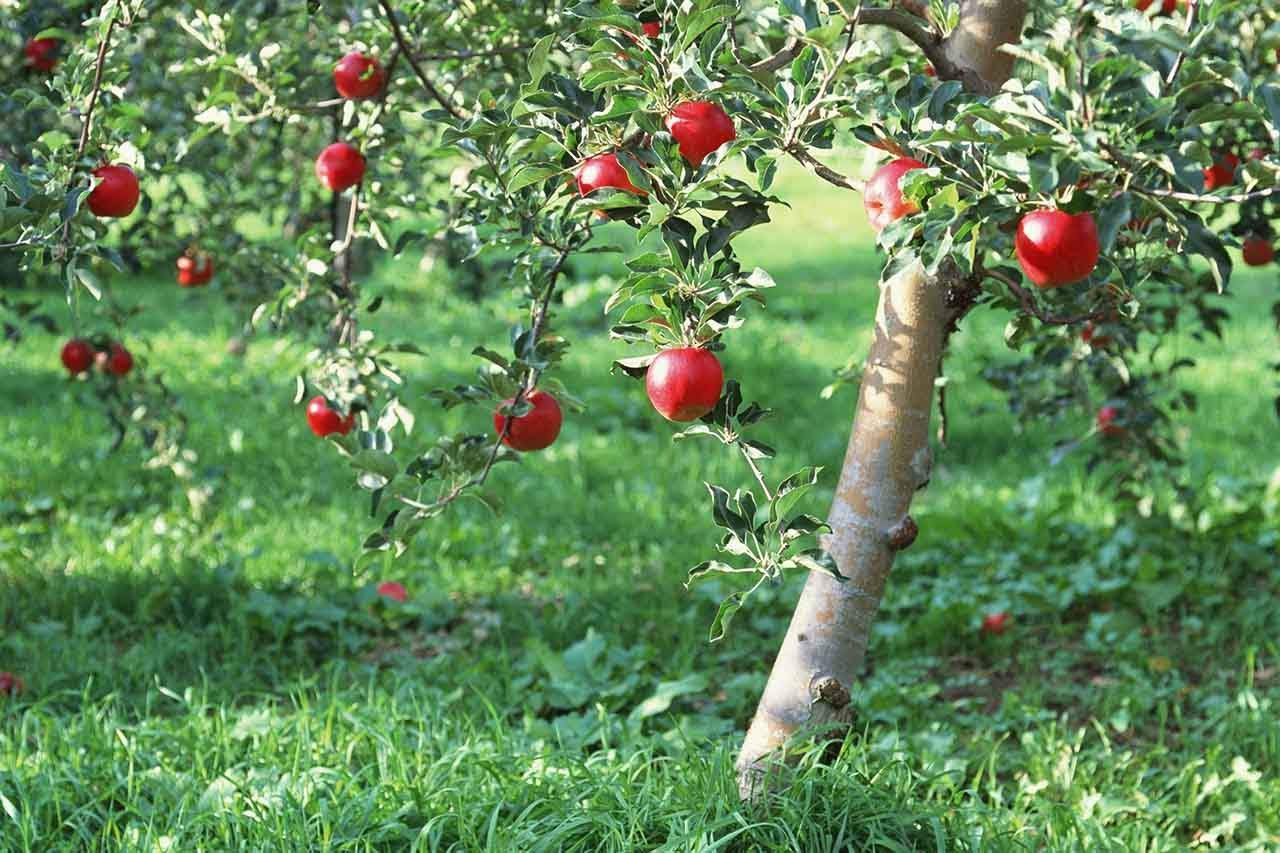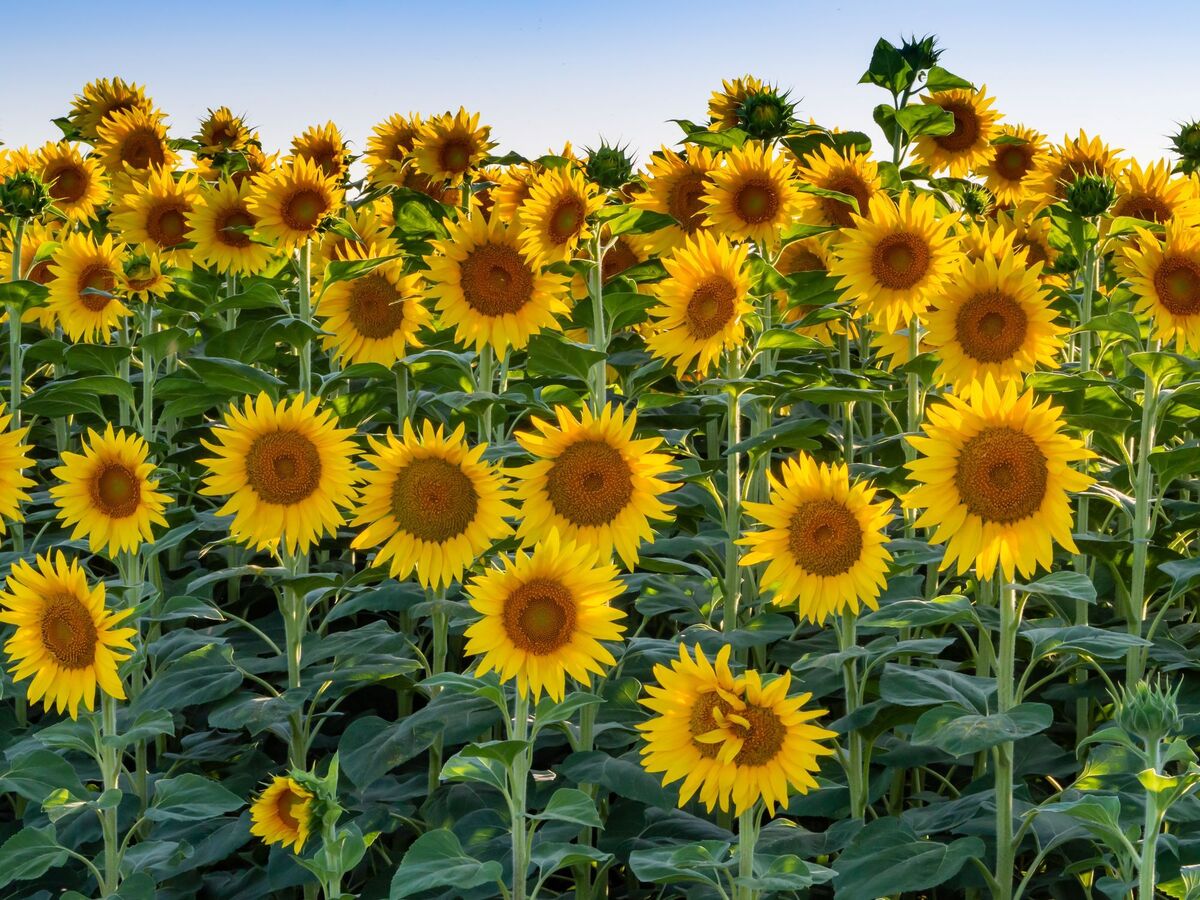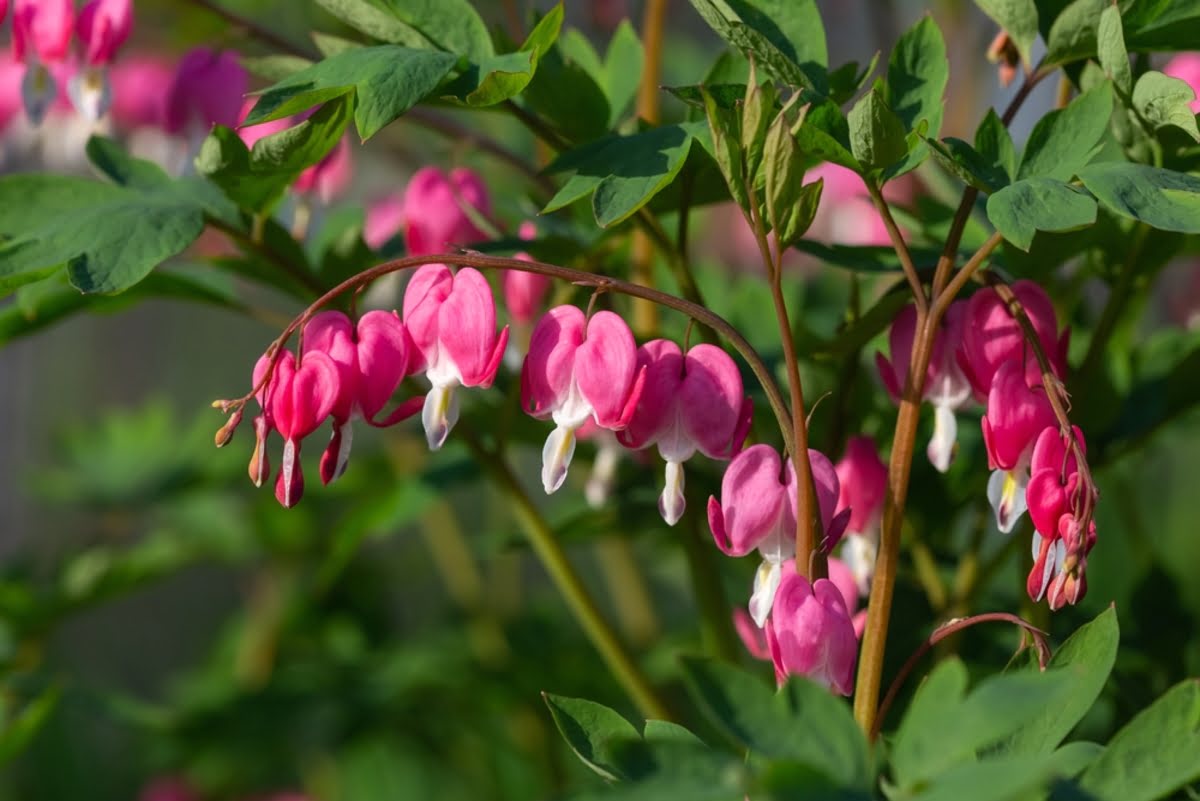Home>Types of Gardening>Ornamental Gardening>How Do Azalea Shrubs Grow


Ornamental Gardening
How Do Azalea Shrubs Grow
Modified: February 10, 2024
Learn how azalea shrubs grow and thrive in your ornamental gardening, with tips and techniques to create a beautiful and vibrant garden.
(Many of the links in this article redirect to a specific reviewed product. Your purchase of these products through affiliate links helps to generate commission for Chicagolandgardening.com, at no extra cost. Learn more)
Table of Contents
Introduction
Welcome to the fascinating world of ornamental gardening! If you have a passion for beautiful flowering plants, then you’re in for a treat. In this article, we will explore the enchanting world of azalea shrubs and delve into the art of growing and caring for these stunning ornamental plants. Whether you’re a seasoned gardener or just starting out, azaleas are a fantastic addition to any garden or landscape.
Azalea shrubs belong to the genus Rhododendron and are known for their vibrant and showy flowers. These flowering plants come in a wide variety of colors, from striking shades of pink, red, and purple to delicate pastels. With their stunning blooms, azaleas can bring a burst of color and beauty to your garden, creating a mesmerizing display that can brighten up any space.
But growing azalea shrubs involves more than just planting them and waiting for the blooms to appear. It requires a deep understanding of their specific needs and optimal growing conditions. In this article, we will explore the key factors that contribute to the successful growth of azaleas, including light requirements, soil conditions, watering and moisture needs, fertilizing techniques, pruning and shaping methods, common pests and diseases to watch out for, and even how to propagate these gorgeous plants.
Whether you’re looking to create a stunning azalea garden, add a few potted azaleas to your patio, or simply want to expand your knowledge of ornamental gardening, this article will serve as your comprehensive guide to growing and caring for azalea shrubs. So, grab your gardening tools and get ready to embark on an exciting journey into the world of azalea cultivation!
What Are Azalea Shrubs
Azalea shrubs are a type of flowering plant belonging to the genus Rhododendron. They are renowned for their stunning blooms, making them a popular choice among gardeners and landscaping enthusiasts. Azaleas are native to several regions, including Asia, North America, and Europe. They are widely cultivated for their ornamental value, with numerous cultivars and hybrids available to suit different garden styles and preferences.
Azaleas are typically characterized by their dense, bushy growth habit, which can range in height from just a few inches to several feet tall. The leaves of azalea shrubs are glossy and leathery, with an elliptical or lanceolate shape. These evergreen or deciduous leaves add year-round interest to your garden, even when the plants are not in bloom.
One of the most captivating features of azaleas is their flowers. Azalea blooms come in a dazzling array of colors, including vibrant shades of pink, red, purple, white, and even bi-color varieties. These flowers can be single or double, with a delicate and intricate form that adds an enchanting touch to any garden setting. The flowering period can vary depending on the specific azalea variety, with some blooming in spring and others in summer.
Azaleas are known for their ability to attract pollinators, such as bees and butterflies, thanks to the nectar-rich flowers. This makes them not only visually appealing but also beneficial for supporting local pollinator populations. In addition to their aesthetic value, azaleas can also provide a sense of privacy and serve as attractive hedges or borders, creating a picturesque backdrop for other garden plants.
It is important to note that while azaleas are visually similar to their close relatives, the rhododendrons, they have some distinct differences. Azaleas generally have smaller leaves and flowers compared to rhododendrons and are more adaptable to various growing conditions. This makes them a popular choice for both novice and experienced gardeners alike.
Now that we understand what azalea shrubs are and appreciate their beauty, let’s explore the specific requirements and care guidelines to ensure these stunning plants thrive in your garden.
Light Requirements for Azalea Shrubs
When it comes to growing and caring for azalea shrubs, providing the right amount of light is crucial for their overall health and blooming potential. Azaleas thrive in partial shade or filtered sunlight, making them an excellent choice for gardens with dappled light or areas that receive morning sun and afternoon shade.
While azaleas can tolerate some direct sunlight, especially in the morning or late afternoon, it is important to avoid placing them in areas with intense, direct sunlight for extended periods. Excessive exposure to harsh sunlight can cause the leaves to scorch and result in poor blooming.
On the other hand, insufficient light can also negatively impact azalea growth and flowering. If azalea shrubs receive too much shade, they may become leggy and produce fewer flowers. Therefore, it is essential to strike a balance and provide them with the ideal light conditions to promote healthy growth and prolific blooms.
When selecting a suitable location for your azaleas, consider the natural light conditions of your garden or landscape. Observe how the sunlight moves throughout the day and identify areas with filtered light or partial shade. These areas are usually under the canopy of taller trees or in the eastern or western-facing parts of your garden.
In addition to choosing the right location, it is important to monitor and adjust the exposure of your azaleas to light over time. If your azaleas are in an area that receives too much direct sunlight, you can provide some protection through the use of shade cloth, pergolas, or strategically placed outdoor umbrellas. On the other hand, if your azaleas are not getting enough light, you can selectively prune nearby trees or shrubs to allow more light to filter through.
By providing the right amount of light for your azalea shrubs, you can ensure that they thrive and produce an abundance of vibrant blooms. Remember, each variety of azalea may have slightly different light requirements, so it’s always a good idea to consult specific care guidelines or consult with a local horticulturist for more tailored advice.
Soil Conditions for Azalea Shrubs
The soil conditions in which azalea shrubs are planted play a crucial role in their overall health and growth. Azaleas prefer well-draining soil that is rich in organic matter and slightly acidic in nature. This is because they belong to the heath family, which thrives in acidic soils.
Before planting azaleas, it is important to prepare the soil to ensure optimal conditions for their root development. Start by testing the pH level of your soil using a soil testing kit. The ideal pH range for azaleas is between 4.5 and 6.0. If your soil is not within this range, you may need to amend it to create a more suitable environment for your azalea shrubs.
If your soil is too alkaline, you can lower the pH by incorporating organic materials such as peat moss, pine needles, or compost. These materials help to increase the acidity of the soil and create a more favorable environment for azaleas. Alternatively, you can use soil amendments specifically formulated for acid-loving plants.
In terms of soil texture, azaleas thrive in well-draining soils that retain moisture without becoming waterlogged. Sandy loam or loamy soil with a good balance of organic matter is typically ideal for azaleas. If your soil is heavy clay or compacted, you can improve its drainage by adding organic matter such as compost or well-rotted leaf mulch.
When planting azaleas, it is recommended to dig a hole that is wider rather than deeper than the rootball. This allows the roots to spread out horizontally and establish themselves more easily. Backfill the hole with a mixture of the existing soil and organic matter amendments, ensuring that the soil is loose and well-aerated.
It’s important to note that azaleas have shallow root systems, so they are more susceptible to drought stress and waterlogging if the soil conditions are not suitable. Therefore, regular monitoring of soil moisture is essential. Water your azaleas deeply and thoroughly when the top inch of soil feels dry to the touch, and make sure to avoid overwatering, as it can lead to root rot.
By providing your azalea shrubs with the right soil conditions, you can ensure that they have a strong foundation for healthy growth and abundant blooms. Remember to regularly mulch around the base of the plants to conserve soil moisture, suppress weeds, and provide additional organic matter as the mulch breaks down over time.
Watering and Moisture Needs of Azalea Shrubs
Proper watering is essential for the health and vitality of azalea shrubs. These plants have specific moisture requirements to thrive and produce vibrant blooms. Both overwatering and underwatering can have detrimental effects on their growth, so it’s important to find the right balance.
When it comes to watering azaleas, consistency is key. They prefer a moist but not waterlogged soil environment. During the growing season, which is typically spring and summer, it’s important to keep the soil consistently moist. This means watering your azaleas deeply and thoroughly, providing enough water to reach the root zone.
Monitor the moisture levels of the soil by checking the top inch or two of soil with your finger. If it feels dry to the touch, it’s time to water. Avoid waiting until the soil is completely dry, as this can cause stress to the azaleas. It’s better to maintain a steady level of moisture in the soil rather than allowing it to fluctuate between bone dry and waterlogged.
Another important factor to consider is the weather conditions. If you live in an area with high temperatures or dry spells, you may need to water your azaleas more frequently. On the other hand, if your region experiences heavy rainfall, you may need to adjust your watering schedule to prevent waterlogging.
When watering azaleas, it’s best to use a gentle and slow watering method to ensure deep penetration into the root zone. This allows the roots to absorb the water more effectively. Avoid overhead watering, as this can lead to foliar diseases and fungal infections.
In addition to proper watering, it’s also beneficial to mulch around the base of the azalea shrubs. A layer of organic mulch, such as pine bark or wood chips, helps to conserve soil moisture, regulate soil temperature, and suppress weed growth. Apply a layer of mulch about 2 to 3 inches thick, taking care to keep it away from the base of the plants to prevent stem rot.
With proper watering and moisture management, you can ensure that your azalea shrubs stay healthy and vibrant throughout the growing season, rewarding you with a stunning display of colorful blooms.
Fertilizing Azalea Shrubs
Fertilizing azalea shrubs is essential to provide them with the necessary nutrients for healthy growth, vigorous foliage, and abundant blooms. Understanding when and how to fertilize your azaleas will help ensure that they thrive and flourish in your garden.
Azaleas have specific nutrient requirements, with a preference for acidic soil conditions. When selecting a fertilizer for your azaleas, it’s important to choose one that is specially formulated for acid-loving plants. Look for a fertilizer with a higher concentration of nitrogen (N) and lower amounts of phosphorus (P) and potassium (K). Ideally, the N-P-K ratio should be around 3-1-1 or 4-1-1.
The timing of fertilization is crucial for azaleas. It is generally recommended to fertilize azaleas in early spring, right before the growing season begins. Avoid fertilizing in late summer or fall, as this can stimulate new growth that may not have time to harden off before colder weather arrives.
When applying fertilizer to azaleas, it’s important to follow the instructions on the packaging and apply the appropriate amount. Over-fertilizing can burn the roots and cause damage to the plants. It’s always better to under-fertilize slightly than to overdo it.
One common method of fertilizing azaleas is to apply a slow-release granular fertilizer on the soil surface around the drip line of the plants. This allows the nutrients to be released gradually over time, providing a steady supply to the azaleas throughout the growing season. Alternatively, you can use a water-soluble fertilizer, diluted according to the instructions, and apply it to the root zone of the plants.
In addition to regular fertilization, it’s important to monitor the overall health and appearance of your azaleas. If the foliage starts to show signs of nutrient deficiency, such as yellowing or stunted growth, you may need to adjust your fertilization practices or consult a local horticulturist for further guidance.
Remember that while fertilizing is important, it is just one component of overall azalea care. It is equally crucial to provide adequate water, proper light conditions, and suitable soil conditions to ensure the health and longevity of your azalea shrubs.
Pruning and Shaping Azalea Shrubs
Pruning is an essential task in maintaining the health, shape, and overall aesthetic appeal of your azalea shrubs. Proper pruning helps to stimulate new growth, improve air circulation, control the size of the plants, and enhance their blooming potential.
The best time to prune azalea shrubs is after they have finished flowering. This is usually in late spring or early summer, although the exact timing may vary depending on your specific azalea variety and location. By pruning after flowering, you allow the plant to set buds for the following year’s blooms.
Start by removing any dead, diseased, or damaged branches. These can hinder the overall health and growth of the azalea and create opportunities for pests or diseases to infest the plant. Use clean, sharp pruning shears or loppers to make clean cuts just above a leaf node or branch junction.
Next, thin out the interior of the azalea shrub. Prune out any overcrowded or crossing branches to improve air circulation and allow more light to reach the center of the plant. This helps prevent diseases and encourages new growth from the base of the shrub.
To maintain the desired shape and size of your azalea shrubs, selectively trim the outer branches to achieve a balanced and aesthetically pleasing appearance. Avoid cutting into old wood, as azaleas tend to have limited re-growth capabilities from older branches. Instead, focus on shaping and maintaining the overall structure of the plant.
When pruning azaleas, it’s important to step back and assess the plant’s overall shape from different angles. Aim for a natural and well-proportioned form that complements your garden or landscape. Avoid excessive pruning, as this can stress the plants and reduce flowering in the following season.
After pruning, it’s a good practice to apply a layer of mulch around the base of the azalea shrubs. This helps conserve soil moisture, suppress weeds, and provide additional nutrients as the mulch breaks down over time.
Remember, pruning and shaping azalea shrubs should be done with care and consideration. Take your time, make deliberate cuts, and step back periodically to assess the progress. If you’re unsure about the pruning process, it’s always helpful to consult with a local horticulturist or gardening expert for guidance specific to your azalea variety and growing conditions.
Common Pests and Diseases of Azalea Shrubs
Azalea shrubs, like any other plant, can be vulnerable to certain pests and diseases. Being aware of the common issues that azaleas may face will help you identify and address problems early, ensuring the health and vitality of your plants.
One of the most common pests that affects azaleas is the azalea lace bug. These small insects feed on the undersides of the leaves, causing stippled or yellowing spots and weakening the plant. Regular monitoring of the foliage and early detection are key to managing lace bug infestations. Treatments may include spraying insecticidal soap or horticultural oil on the affected foliage or introducing beneficial insects that feed on the lace bugs.
Another pest that can cause damage to azalea shrubs is the azalea caterpillar. These caterpillars have a voracious appetite for azalea leaves and can quickly defoliate the plant if left untreated. Remove any caterpillars by hand or use organic insecticides labeled for caterpillar control to manage these pests.
Aphids are a common problem in many garden plants, including azaleas. These tiny insects often congregate on the new growth, feeding on the plant sap and secreting honeydew, which can attract other pests or lead to the growth of sooty mold. Regular inspection and the use of insecticidal soaps or neem oil can help control aphid populations.
Azalea shrubs are also susceptible to several diseases, including powdery mildew and leaf spot. Powdery mildew appears as a white, powdery coating on the leaves, while leaf spot manifests as circular or irregular spots on the foliage. Proper air circulation, avoiding overhead watering, and the use of fungicidal sprays can help prevent and manage these issues.
Root rot is another concern for azaleas, especially when the soil is excessively wet or poorly drained. This fungal disease can cause root decay, leading to wilting, yellowing foliage, and stunted growth. Ensuring proper soil drainage and avoiding overwatering can help prevent root rot in azalea shrubs.
Regularly inspecting your azalea shrubs for any signs of pests or diseases is crucial for early intervention. It’s also important to maintain overall plant health through proper watering, fertilization, and suitable growing conditions. In case of severe pest or disease infestations, it may be necessary to consult with a professional arborist or horticulturist for appropriate treatment options.
Propagating Azalea Shrubs
Propagating azalea shrubs is an excellent way to expand your garden or share these beautiful plants with friends and family. There are several methods of propagating azaleas, including seed sowing, stem cuttings, and layering.
One of the most common and reliable methods of propagating azaleas is through stem cuttings. This involves taking a healthy stem section, typically around 4 to 6 inches long, and rooting it to create a new plant. Select a stem that is semi-hardwood, meaning it is not completely new growth but not fully matured either.
To take stem cuttings, use clean and sharp bypass pruners to make a clean cut just below a leaf node. Remove any leaves from the lower part of the cutting and dip the cut end into a rooting hormone powder to encourage root development. Plant the cutting into a well-draining rooting medium, such as a mixture of peat moss and perlite or vermiculite.
Place the cuttings in a warm and humid environment, such as a greenhouse or a propagating tray covered with a plastic bag. Mist the cuttings regularly to maintain humidity and prevent them from drying out. After a few weeks to a couple of months, the cuttings should develop roots. You can then transplant them into small pots or into your garden once they are well-rooted and established.
Another method of propagating azaleas is through layering. This involves bending a low-growing branch to the ground and securing it in place with a stake or a rock. Make a small wound on the bottom side of the branch, apply some rooting hormone, and cover the wounded area with soil or a mixture of soil and peat moss. Over time, roots will grow from the wounded area, and once they are well-established, you can separate the new plant from the parent plant and transplant it.
While propagating azaleas from seeds is possible, it can be a more challenging method, as it requires specific conditions and patience. Azalea seeds need a period of cold stratification to break their dormancy, followed by warm temperatures and high humidity to germinate. It may take several months or even up to a year before the seeds sprout and develop into small plantlets.
Regardless of the propagation method you choose, it’s important to provide the newly propagated plants with proper care. This includes providing them with the right light conditions, regular watering, and protection from extreme weather conditions. As they grow and mature, continue to monitor their health and adjust their care accordingly to ensure their successful establishment in your garden.
Conclusion
Azalea shrubs are a breathtaking addition to any garden, with their vibrant blooms and lush foliage. By understanding and meeting their specific requirements, you can successfully cultivate and care for these stunning ornamental plants.
From providing the right amount of light and ensuring well-draining soil conditions to proper watering techniques and regular fertilization, each aspect of azalea care plays a crucial role in their overall health and growth. Additionally, pruning and shaping azalea shrubs allows you to maintain their desired form and showcase their natural beauty.
However, it’s important to be aware of potential challenges that azaleas may face, such as pest infestations and diseases. Monitoring your plants for any signs of trouble and taking appropriate action can help protect their well-being and prevent further damage.
If you want to expand your garden or share the beauty of azaleas with others, propagating these plants through stem cuttings or layering is a rewarding and cost-effective method. By following proper techniques and providing the necessary care, you can successfully propagate new azaleas and continue to enjoy their splendor for years to come.
In conclusion, growing and caring for azalea shrubs requires a combination of know-how, patience, and attentive gardening practices. By providing them with the optimal growing conditions and addressing any potential issues promptly, you can enjoy a vibrant and flourishing display of azalea blooms while creating a stunning focal point in your garden.
